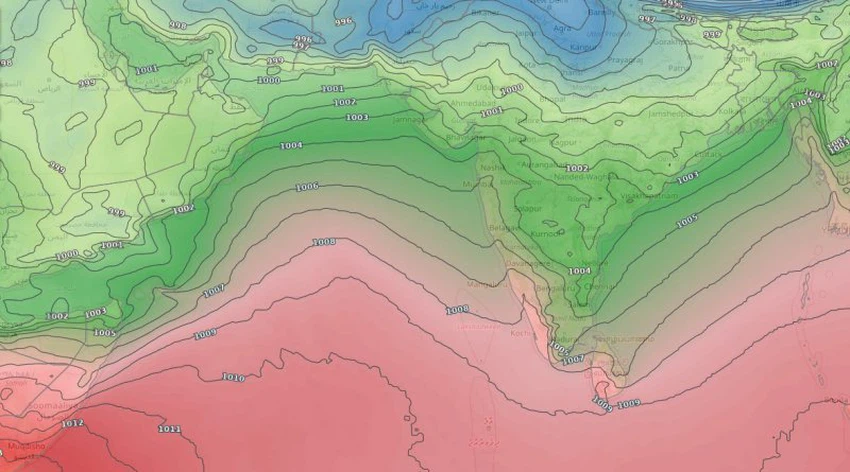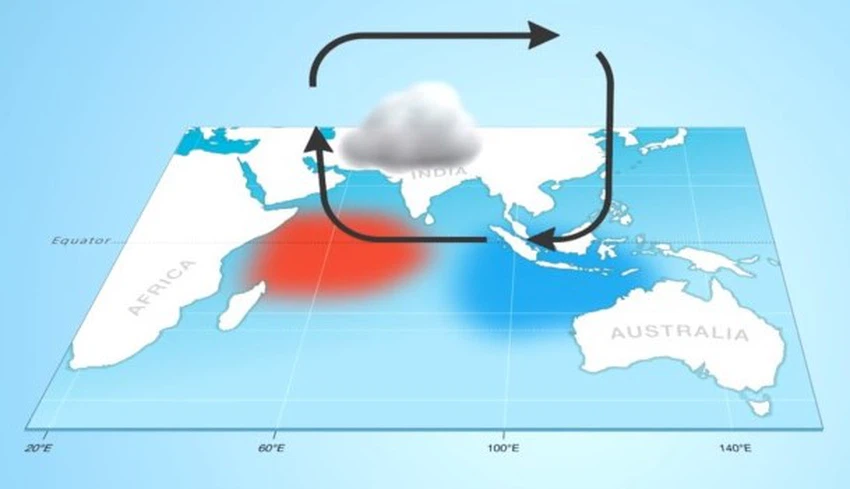How the monsoon turns the Indian subcontinent from a wasteland to a flood during the summer
Weather of Arabia - The Indian subcontinent is affected by seasonal floods coinciding with the beginning of the summer caused by humid southwesterly winds, or what is known as the monsoon winds. These winds bring heavy rains that form torrents and floods in many areas, and these rains make up most of the precipitation Throughout the year, India is characterized by a tropical climate, which means that a completely dry winter prevails due to cold and dry northeastern winds during the winter.
Causes of monsoons blowing towards India
Coinciding with the beginning of the summer, the impact of solar radiation of various types on India is increasing. The Great Desert of India acquires a high temperature during the summer, unlike the waters of the Indian Ocean, which remain clearly cooler, which causes a decrease in the density of air over the Indian desert and thus forms areas of low air pressure, As a result, south to southwesterly winds rushing, carrying large amounts of moisture, quickly reach the Indian coasts until they begin to condense and form rainy thunder clouds that deepen from time to time towards the interior.

Moreover, as a result of the meeting of the trade winds from the northern and southern hemispheres, the tropical separator (ITCZ ) advances during the summer towards the depths of the Indian subcontinent, contributing to the strengthening of the center of low atmospheric pressure, and the increase in the flow of warm tropical currents loaded with large amounts of moisture, to increase the frequency of Heavy rains cover most parts of India, where the depth of the tropical interval peaks during the month of August each year.
Some areas receive heavy rainfall exceeding the barrier of 2000 mm, especially the areas in the northeastern part, which are adjacent to the Ghats and the Himalayas, as a result of the convergence of the monsoon winds with the warm winds coming from the mountain ranges, to condense cumulus clouds, which leads to large precipitation to form floods and torrents in those areas.
Factors affecting the strength of the monsoon
The high altitude in the southeast of the African continent is the source of the monsoon winds, as the depth of this atmospheric height is an important factor that determines the intensity of the monsoon winds coming to India, as the higher the atmospheric pressure in that region leads to an increase in the frequency of the monsoon winds.

On the other hand, seasonal precipitation increases in conjunction with a positive Indian dipole coefficient (+ IOD ), as the waters of the western Indian Ocean become warmer in conjunction with greater coldness in the eastern part of the Indian Ocean, which leads to increased amounts of moisture and water vapor in the atmosphere And its rush into the Indian subcontinent, increasing the amounts of monsoon precipitation in addition to increasing the activity of the monsoon days.
The effect of the monsoon winds on the Arabian Peninsula
The monsoon winds flow from high pressure areas located in the southeast of the African continent towards the Indian Ocean, but it breaks in the northeast direction towards India due to the Coriolis effect caused by the Earth’s rotation, but with the rush of the tropical separator towards the south of the Arabian Peninsula, especially during the months of July and August, the monsoons penetrate It varies greatly from season to season to affect the heights of western Arabia and the Hajar Mountains, where convective values increase, cumulus clouds form and thunderstorms fall in those areas.
It is worth noting that many researchers believe the word monsoon is derived from the Arabic word "season", as it was used for the first time by Arab navigators to describe the monsoon winds of the Arabian Sea.
Arabia Weather App
Download the app to receive weather notifications and more..



